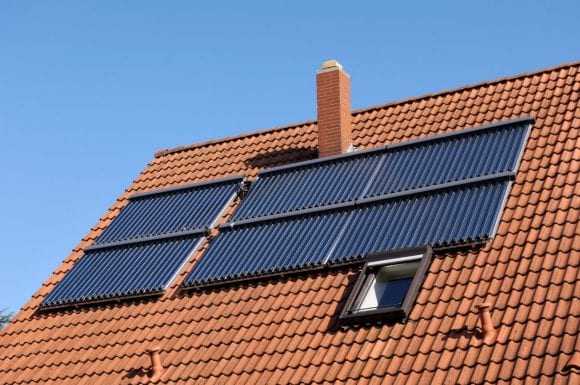We’re here for you
Arrange an appointment for a non-binding consultation or if you have any questions, just give us a call.

Energy-efficient renovations
PV systems are an ecological alternative to procuring electricity from local providers. When does it make sense to install them? We answer the most important questions that need to be clarified in advance.
Content:

Due to price fluctuations on the energy market caused by global crises, a growing number of households want to generate some of the electricity they need themselves. From choosing the right solar (photovoltaic) panels to potential delivery times, there are several things to consider. What you need to be aware of when installing a PV system and how you can finance it.
Since the price explosion for oil and gas in 2023 and the concern about an energy shortage, many people wish to make their house as self-sufficient as possible. Most experts already agree that energy production will be more decentralized in the future; some of this energy will be PV electricity generated from the many roofs throughout Switzerland. “However, it is a popular misconception that a household with its own PV system, including electricity or battery storage, is protected against a blackout,” emphasizes David Stickelberger, deputy managing director of Swissolar.
Such protection is technically very demanding; it requires a retrofit with special components, which are currently hard to come by on the market. A vision of fully self-sufficient houses makes neither economic nor ecological sense. The future lies more in improved interconnection of energy production and energy consumers. This includes regional exchange, for example, with local energy networks, etc.
Having their own photovoltaic system on the roof, on the facade or on the balcony promises many people more independence – and better conditions in terms of electricity consumption. It is not possible to give a general answer whether installing a PV system is worthwhile financially. Homeowners are advised to obtain information from their local energy provider about the feed-in remuneration tariffs for the electricity they generate for the local grid. Feed-in premiums fluctuate regularly, as does the cost of the system.
Purchasing a PV system in combination with a battery storage system, which can store the electricity generated to be used later, is more worthwhile. But this also means incurring higher purchase costs. Therefore, always contact the relevant experts to find out if and when a purchase is worthwhile for you. With the right planning, you can reduce the price of your power consumption over the long term.
Arrange an appointment for a non-binding consultation or if you have any questions, just give us a call.
Disclaimer